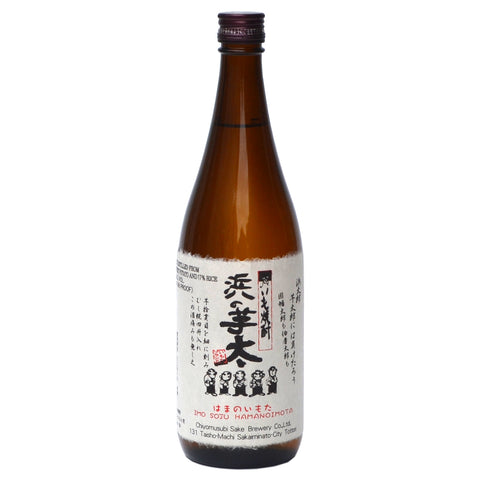Last spring, after a grueling flight from San Francisco and a layover, Yoko and I landed in a dark and rainy Kagoshima, a city on the southern island of Kyushu. We were exhausted, but so excited to start the visit – we had been invited by the Kyushu government who would take us all around the island with fellow retailers, bar owners, writers, and importers to learn more about shochu. It was a very special trip, and we made some great friends from around the U.S., Japan, and Hong Kong.
After checking into the hotel in downtown Kagoshima, we were delirious from the time change, and of course, starving. We took a short walk to Kagomma Furusato Yataimura, a tiny side street full of yatai (food stands).
We took a seat at the first one we saw that looked cozy and promising. It had been raining but we were shielded by plastic curtains that surrounded the food stall.
The first thing we did was order shochu with hot water (since it was chilly out) and butamiso. This is a local Kagoshima specialty of pork bits mixed with miso that tastes sweet and savory. The condiment was accompanied by cucumber slices for dipping. It was an excellent way to start the meal and paired so well with the aromatic shochu.
We were then served Miyazaki gyu nigiri. Beef from Miyazaki, also in Kyushu, is prized throughout Japan – especially the wagyu. This was a simple and delicious preparation that melted in your mouth.
Stir-fried pork slices:
Buta no kakuni (braised pork belly):
Kagoshima is known for their hearty cuisine, especially pork dishes, which pairs well with its local beverage of choice: satsuma imo (sweet potato) shochu. Imo shochu is earthy and vegetal and its aroma can go from fruity, to fungal. It is bold compared to barley or rice shochu, and Kagoshima's pride. Imo shochus are my favorite type of shochu, so I am so happy we sell many different kinds at Umami Mart!
From here, we set out to another stall, specializing in oden (Japanese fishcake stew). I LOVE oden so this was a special treat for me. Kagoshima is also home to the satsuma age (fried fish cake), one of my favorite foods, so I was really in my element here.
I ordered a local Kagoshima imo shochu as well, called Satsuma Ohara.
On the rocks:
You'll notice the "5:5" measurement on the glasses above, or these other various proportions below:
The hatch mark is where the bartender stops pouring the shochu, and would fill the rest up with hot or cold water. "4:6" means four parts shochu to six parts water; "5:5" means equal parts shochu and water; and "6:4" means six parts shochu to four parts water. Mixing water and shochu is the most common way to enjoy shochu in Japan, as you can control the alcoholic strength of the drink by diluting it. Genius!
The next week took us to all parts of Kyushu, which I will chronicle in this Adventures in Kyushu series. It was such a memorable trip and I especially loved Kagoshima. This view says it all:
Ride along with us!
KAGOMMA FURUSATO YATAIMURA
6-4, Chuocho, Kagoshima-shi
Kagoshima, 890-0053
T: 099-255-1588














Comments (1)
Thanks for posting your culinary tour of Satsuma! (Kagoshima) I spent 12 years in Japan, almost half of which in Kagoshima City, my favorite town in East Asia. There I acquired my love for imo shochu, and Satsuma-ryori. Your sampling’s were almost complete. I’d like to suggest visitors to Kagoshima also try KIBINAGO, a small, silverside, anchovy-like fin fish that is endemic to Kinko-wan (Kagoshima Bay). It can only be found there, and served as sashimi with a tart miso sauce, is sensational!